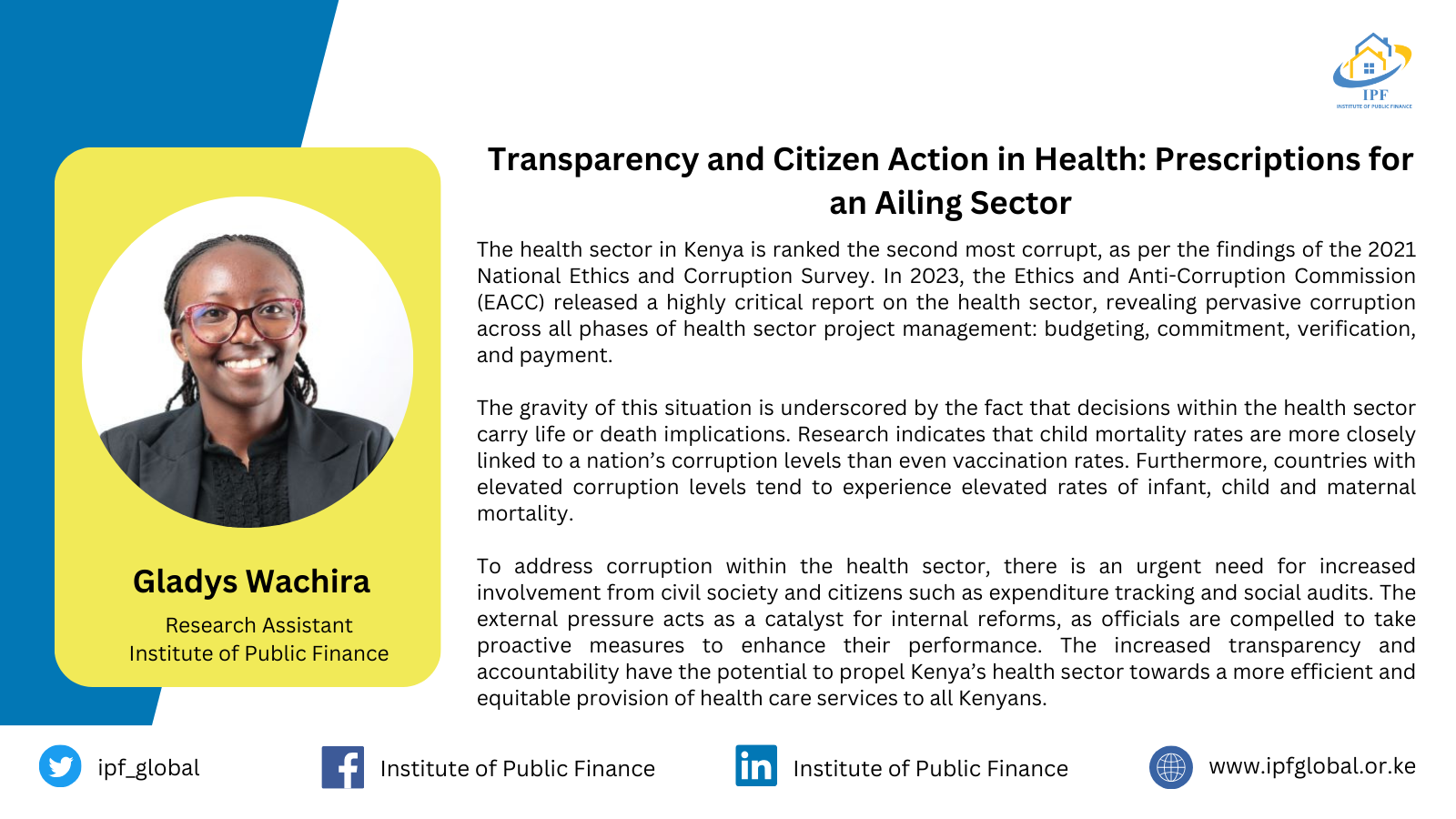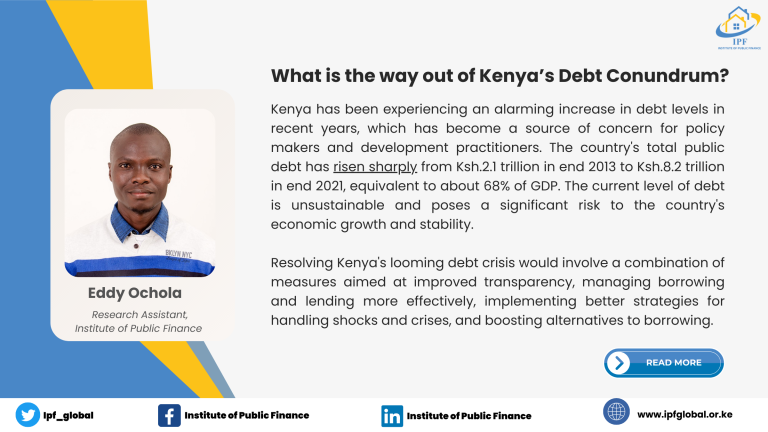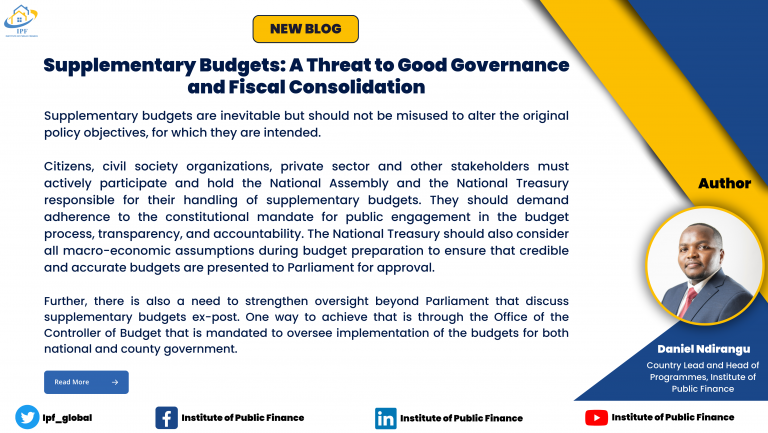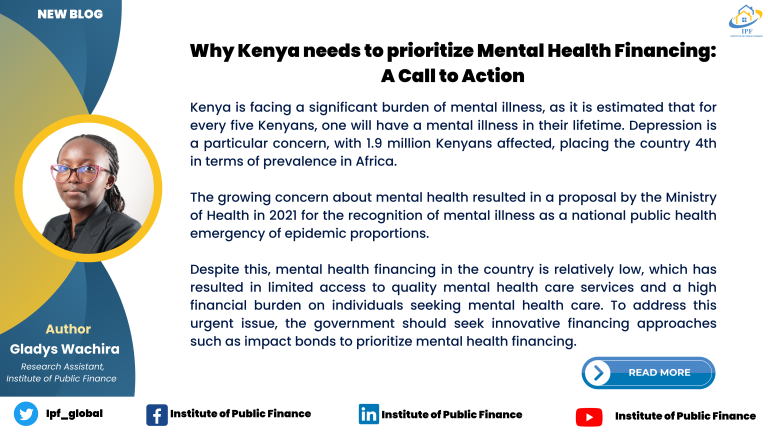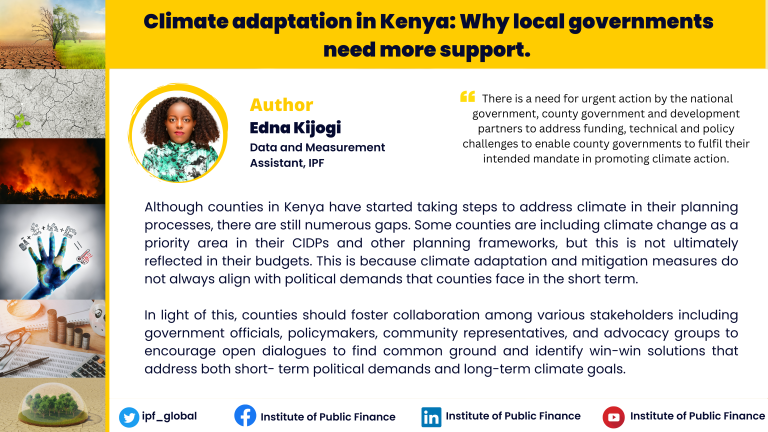The just concluded general elections in Kenya on 8th August 2017, threw the budget process in a spin at the county level. While section 126 of the Public Finance Management Act, 2012 anticipates that the first key budget document in each budget cycle will be the Annual Development Plan submitted to the County Assembly by the 1st September of each year and made public within seven days of tabling, this has largely gone without being honored by most of the counties occasioned by the delays in county assemblies settling down for business among other reasons. The Annual Development Plan is an extract of a five-year plan called the County Integrated Development Plan (CIDP) as defined by section 108 of the County Government Act, 2012.
The CIDP should have clear goals and objectives, an implementation plan with clear outcomes, including a projection of the financial resources that are needed for capital project developments and operational expenditure. The first CIDP that was produced by counties about five years ago set out the development agenda for county governments for the period 2013-2017. All counties are now expected to produce new CIDP’s in this five-year period from 2018 until 2022, which will lead to developing of Annual Development Plans for the respective counties.
To support prudent use of public finances, Section 104 of the County Government Act, 2012 talks of the obligation to plan by counties and that no public funds shall be appropriated without a planning framework developed by the county executive and approved by the county assembly. The Annual Development Plan which is the planning document that guides appropriation of public finances in a coming financial year should include among other things; county priorities in the medium term that reflect the county government’s priorities and plans, show how a county is responding to changes in the financial and economic environment, programmes to be delivered and details of each program ( like where they are derived from, the program status (new or ongoing), the program/project cost implications, opportunities for monitoring and evaluation), description of significant capital development and a summary budget in the format required by regulations.
While the ADP is the primary document at the commencement of the budget year, there are other budget documents that rely on it and feed into it to aid in planning for another financial year. A review of county websites carried out on Monday 2 nd October 2017 by our organization ( www.ipfkenya.or.ke) on all the 47 counties websites revealed that only three counties had made their FY 2018/19 ADP publicly available. We define a document that is publicly available as that which is “published on the official website of the county government issuing the document within the time frame specified in the PFM Act 2012 and that all citizens can obtain it free of charge”.
In this review of county websites, only Makueni, Siaya and Nairobi counties had published their FY 2018/2019 ADPs but neither of these had their CIDP 2018-2022 published. Publicizing the ADPs as a principle of budget transparency and accountability implies that a county’s citizens have the right, as individuals or in association in the form of civil society organizations, to make and express judgments on the county’s budget. This requires that budget documents be widely available. According to the international Open Budget Survey, a government budget document can be considered publicly available if it meets two criteria (a.) It must be published within a reasonable timeframe by the institution or agency responsible for producing the document; and (b.) It must be available at minimal or no cost to any person who wishes to access the document (i.e. the government must not make documents available selectively, or only to certain individuals or groups).
In this case, we can conclude that counties are performing poorly in terms of publicity of the ADPs which will aid for planning and budgeting for FY 2018/2019. Counties have failed to comply with the timelines stipulated in law and are not taking advantage of technology to disseminate this crucial information through their websites as our review of county websites on Monday 2nd October 2017 found out.
This is despite the lapse of the period envisioned in law which is “within 7 days” after tabling of the ADP to the county assembly on 1st of September.
It is imperative for county government officials to note that the advantage of using online systems to share public information is that; it’s a cheap means of sharing information unlike having to develop print outs of the documents and disseminating them which will incur other unnecessary costs, the websites will have the information shared widely for those who have access to internet and this eliminates the old bureaucratic process of obtaining public information.
Finally, when we have budget information on the official websites then we can conclude that counties are really open on budget information and plans for FY 2018/2019 are underway in the case of the ADP. Unfortunately, the situation we are currently facing is filled with opaqueness and we cannot tell if there are any plans for spending public finances.








